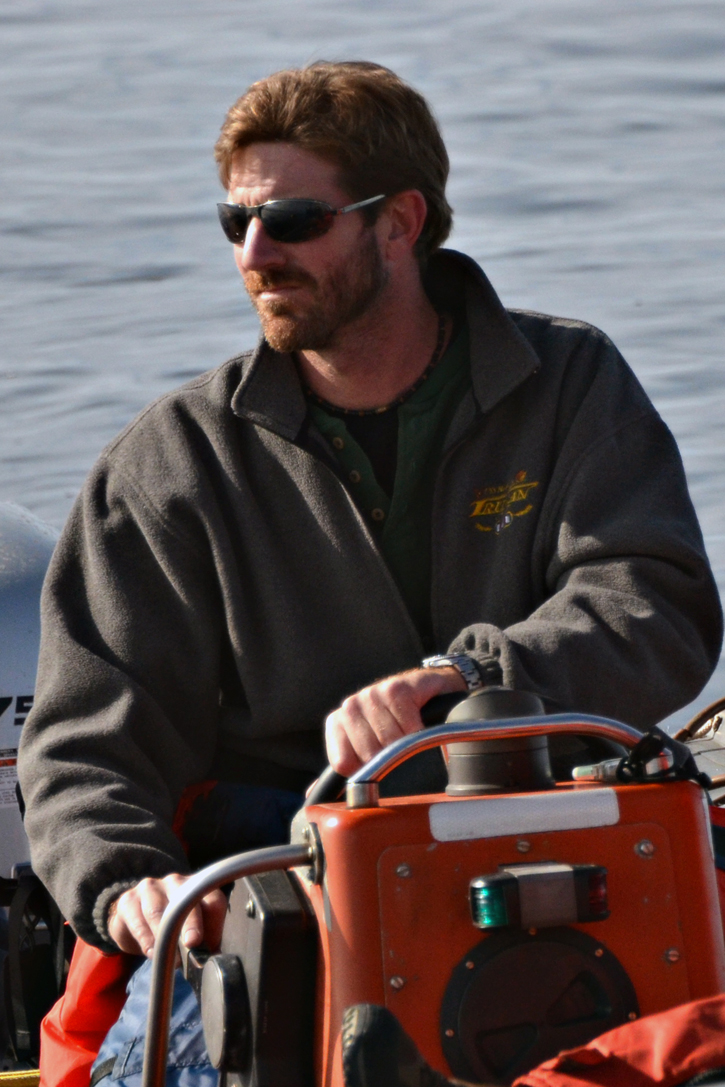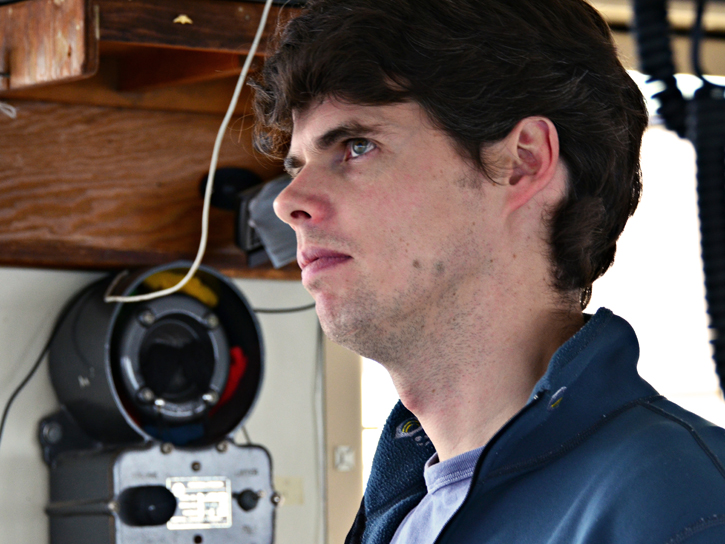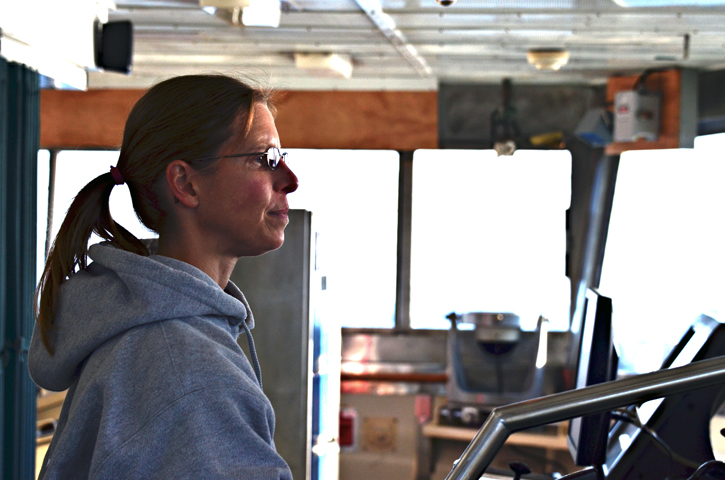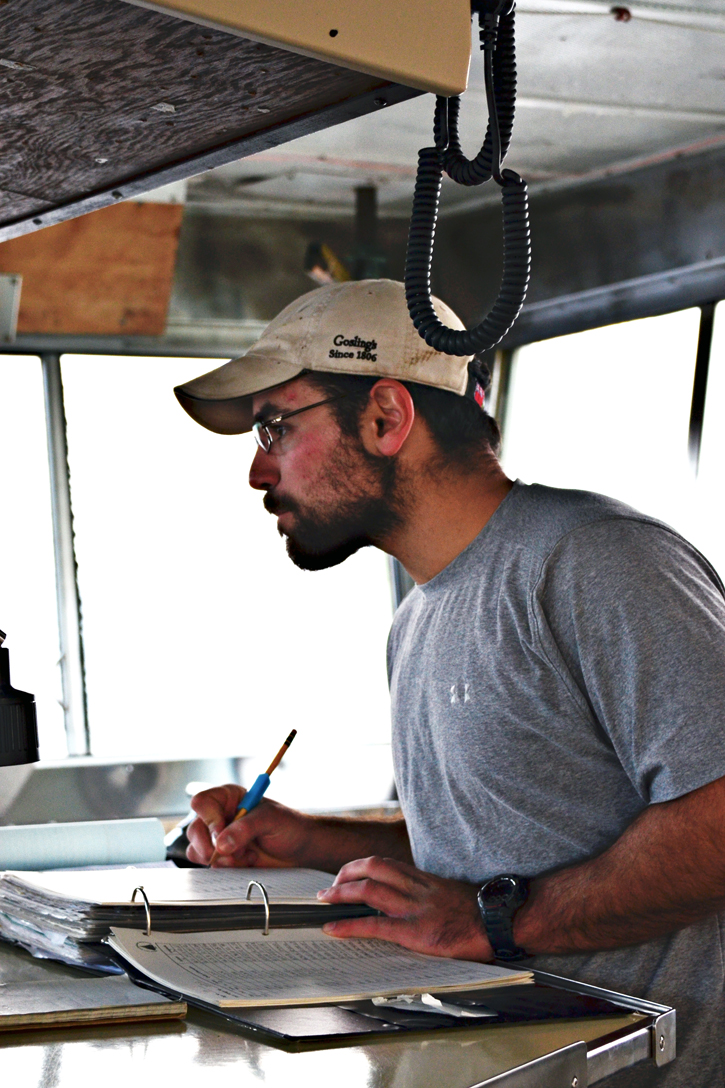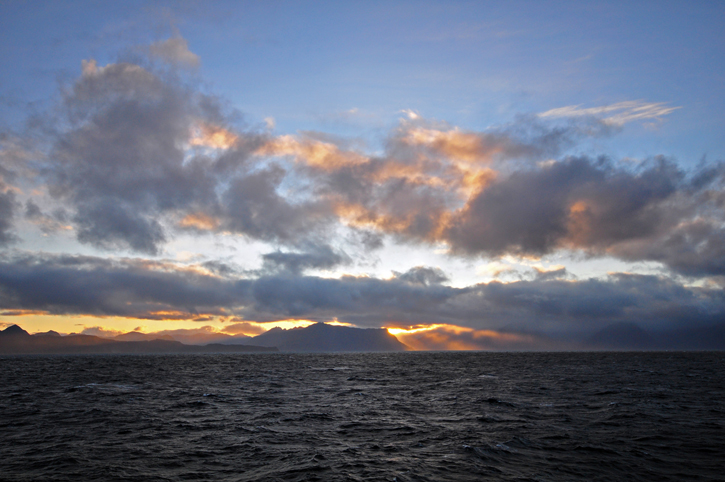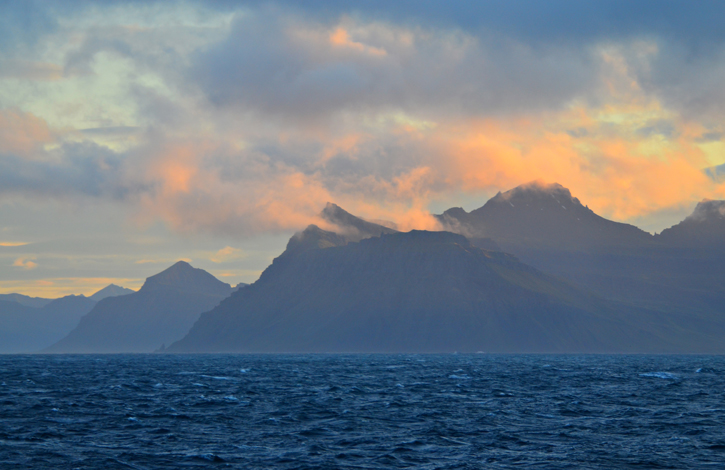September 15, 2011The time draws short. We’ll end the trip at Isafjordour in the northeast of Iceland in eight days from this writing. There the science party and some of the crew will leave the ship to go their separate ways. Knorr will then round Cape Farewell at the southern point of Greenland and head up the west coast to Nuuk, where a new science party and their gear will board for a cruise in the Davis Strait between Greenland and Baffin Island. And that is the nature of life aboard Knorr, one cruise bleeding into the next with brief port stops in between for disembarking, loading and underway again. Meanwhile, here, east of Iceland, it appears that the weather’s breaking in our favor, the low finally moving off toward mainland Europe. Now, 1800 local time, the wind is still up near 40 knots, but the sun is actually shining, glinting on the whitecaps, and the gray sea has tuned teal in the low-angle light. CTD and ADCP data keeps pouring in, and Bob and Kjetil continue nimbly to adjust their thinking in response. For her people, shipboard routine continues with its pleasing (speaking for myself, at least), practiced regularity. This, then, might be a good time to explain the division of labor that keeps this vessel running.
This, like most such research projects is funded by a grant from the National Science Foundation. As Bob is quick to credit, there were multiple Principal Investigators (PIs) contributing equipment and brainpower during the early stages of the cruise when moorings were the focus. Now Bob and Kjetil are directing the ship to where they need her to go. However, neither gives orders. Captain Kent Sheasley (the Skip) is ultimately responsible for the vessel, it’s safety and that of all aboard. That’s his first responsibility, but a close second is to facilitate science. So there is, or there should be, a close, mutually respectful working relationship between the chief scientist, the captain, and the bridge officers. Bob is a world-class scientist, but he’s also a world-class chief scientist. There’s a difference. It has to do with “scientific seamanship.” He’s calm in the face of adversity, he understands the way of the ship from the mariners’ perspective, and he treats Knorr’s people with the genuine respect they deserve. (I’ve never sailed with a bad chief sci, but I’ve heard stories from the crew.) So this may be a good time to begin to discuss the structure of the ship’s departments and the division of labor. Since we’re talking about the bridge, we might as well start there and see how far we get in one day.
The Skip has three mates, designated Chief (Adam), Second (Jen), and Third (Mike). I’m not certain when the traditional roles of the mates were nominally fixed, but it reaches back well into 18th century; Knorr’s structure adheres more or less to tradition. Each mate stands eight-hour bridge watches in stints of six and two hours (the latter called the “dog watch” in antique usage), actually operating the ship while she’s “on station” and transiting between stations or ports. That’s their main job, but each has additional duties. The chief mate serves as medical officer (the Skip is also medically trained), and he’s also in charge of the deck, everything that goes on “outside.” This includes the boats, their deployment and operation; the anchor systems; cranes and winches; and he plans the in-port loading procedure as it relates to available deck space and stability. In all this deck work, the Chief Mate works through the bosun who actually gives orders to the Ordinary Seamen (OS) and the Able Bodied Seamen (AB), rather like the lieutenant/sergeant relationship.
But wait, let me pause here to make this clear upfront: The atmosphere on Knorr is delightfully unmilitary. No one snaps out orders. No one calls anyone sir or ma’am, at least not officially. There are no trappings of rank, nothing even close to uniforms. (Don’t get me started on military-ship ways.) Science, officers, techs, crew—we all eat together in the same “mess room” and share all public spaces. Everyone knows who’s in charge at the various levels and respects their capability, so no one needs to act like they’re in charge. Everybody on Knorr could make more money on commercial ships. But this egalitarian spirit is one of several reasons why they stay aboard Knorr trip after trip.
The Second Mate Jen is, according to tradition and current practice, the navigation officer. She plans and plots the routes between ports, and on this trip, she plots the CTD lines depending on where Bob and Kjetil want to go. She updates the charts per the monthly Notes to Mariners, and she’s responsible for the bridge electronics. Bob told me a good nav/ship-handling story the other day. The latitude/longitude positions are usually carried out to four decimal places. For instance, our present position is 65°12.4483’ North by 011°47.2151 West. There are 60 nautical miles in each degree of latitude, and each minute of latitude equals one nautical mile. So we’re presently 12.4483 miles north of 65° North. Early in the trip, Bob planned a mooring position, which always needs to be precise, and when we arrived on station, he went to the bridge to check where we actually were. Well, we were spot on, directly over that exact position on the bottom—out to four decimal places. Adam, who happened to be on watch, asked Bob where on the ship he’d like to plot from, the fantail? “I don’t bother going up to check positions anymore,” Bob told me.
In addition to his bridge watch, Third Mate Mike is also responsible for personal and ship’s safety gear. We all have life jackets and survival suits (“immersion suit” is now the preferred term) in our rooms, which Mike maintains and services along with the life rafts, fire-fighting gear, and hazardous-materials suits.
The lines of authority and communication are established and clear, but they are not rigid. Everybody pitches in when required and sometimes when not. “We’re a team,” as Kyle said yesterday. They are; I’ve seen it. Extolling the virtue of the ship and her complement, I might sound like I’m trying to sell something. No, these are objective, observations. I promise. * * * We’ve just had a magnificent view of the east coast of Iceland, sets of high, shark-jaw mountains backlit by the sinking sun, slashes of orange and soft pink reflecting on the bottom of soft cumulous clouds, near a town called Nordhfjördhur. And such sights as these—another reason why people go to sea aboard research vessels. Last updated: December 27, 2011 | |||||||||||
Copyright ©2007 Woods Hole Oceanographic Institution, All Rights Reserved, Privacy Policy. | |||||||||||


